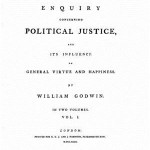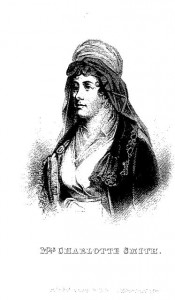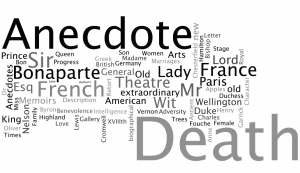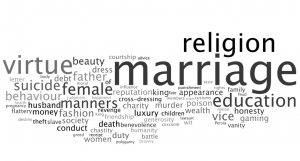As we have said many times before, eighteenth-century periodicals like the Lady’s Magazine can be challenging to research. Magazines are intrinsically diverse texts, but at this early stage they were especially complex and unstable, to the point that it is difficult to make statements about the form and content of these publications that apply for their entire run. Furthermore, the Lady’s Magazine does not tell you much about its publishers and authors, and there is a dearth of reliable secondary sources that could fill you in on who was involved in its publication and writing. The General Censuses that are such a blessing to nineteenth-century periodicals scholars only start in 1801, and although it is very helpful that descriptions of holdings at town record offices can now largely be found online, you often need significant research leads in order to land on anything of use there. Ideally, you hope to retrieve a publisher’s ledgers, which potentially contain all kinds of information on the business transactions of a publisher.
It is my job to identify people associated with a poorly documented periodical, so I value such sources highly. Among the items often contained in ledgers are receipts for payments and “memoranda of agreement” between the publisher and authors, which can help you to reconstruct a background for the discussed publications. This may include the date that a copyright was acquired, the price paid for the latter, the agreed number of copies to be printed, a precise address for the author, and (oh Joy of Joys) the full legal name of authors behind pseudonymous or anonymous publications. In some cases you also find out about long forgotten members of the printing or bookselling trade who played a vital part in bringing the texts into the world, for instance when you find receipts for engravings, or an invoice for book deliveries.

LM VI (1775). Image © Adam Matthew Digital / Birmingham Central Library. Not to be reproduced without permission.
We can hardly be certain just how complete centuries-old archives are, but in some lucky cases vast ledgers have been preserved. Unfortunately, no such detailed ledger appears to have survived for Robinson and Co., the company that owned the Lady’s Magazine. There is however a small archive extant, which is kept at the Manchester City Library, containing about 300 ledger items. If you want to make sure that you are not missing out on any relevant information, there is nothing for it but to work through these one by one. For some this takes a long time because they are all handwritten and not always legible, and in names and addresses they contain abbreviations and spelling variants that make it difficult to cross-check with other sources, like our own detailed notes, the Oxford Dictionary of National Biography, online library and database catalogues, and the surprisingly useful Google Books.
We never had high expectations for the information that these documents would yield on the contributors of, and publisher’s network specifically relevant to the Lady’s Magazine. Our regular readers may be able to guess why: the magazine of course relied to a large extent on unsolicited submissions by reader-contributors, who most likely were never paid. No payment will normally equal no paper trail. What did not come in for free would usually have been taken (as in “pirated”) from other publications, as was common in magazines until well into the nineteenth century, and therefore not be documented either. After putting in close to fifty hours, I discovered that despite several items pertaining to Robinson’s other periodicals such as the Journal of Natural Philosophy (1797-1814), only a few documents held in Manchester are directly relevant to the Lady’s Magazine, and none of these contain any ground-breaking information.
Nevertheless, I was not overly disappointed. Among other things, the archive brings home the extraordinary diversity among the books and periodicals published by the Robinsons and their associates. The publications mentioned in the archive range from plays to novels, and from philosophical treatises to gardening manuals. There is something endearing in the fact that the  publisher to whom we owe volatile works like Godwin’s Enquiry Concerning Political Justice (1793) also took on The Complete Wall-tree Pruner, given to posterity by horticulturalist John Abercrombie in 1799. There are documents on both of these books in the archive. Professor Abercrombie apparently received £12-12s-6d for the fruits of his labours. How much he received for the fruits of his wall trees is not on record.
publisher to whom we owe volatile works like Godwin’s Enquiry Concerning Political Justice (1793) also took on The Complete Wall-tree Pruner, given to posterity by horticulturalist John Abercrombie in 1799. There are documents on both of these books in the archive. Professor Abercrombie apparently received £12-12s-6d for the fruits of his labours. How much he received for the fruits of his wall trees is not on record.
Some documents give you intriguing insights into the day-to-day operations of publishing firms in this period. There are notices about bills drawn by authors on the publisher, for instance several ones signed by Charlotte Smith from the period 1791-1792, a few years after her financially crippling divorce. This was a quite common practice whereby cherished authors would be allowed to have advances on the sales of their books paid straight to  debtors. As Wiliam St Clair informs us, this was not only a favour to ingratiate oneself with authors; such largesse also boosted the reputation of the publishing firm for solvability.[1]
debtors. As Wiliam St Clair informs us, this was not only a favour to ingratiate oneself with authors; such largesse also boosted the reputation of the publishing firm for solvability.[1]
More directly relevant to the magazine are the regular mentions of certain contributors to the magazine in other contexts, which imply that they were in some capacity connected to the publishing firm. This is an angle that we will need to pursue, as it may lead us to the identification of staff writers and editors for the magazine, and as yet we know very little about these. Here and there names for engravers and printers pop up, which could in turn provide welcome clues to the identities of people associated with the material production of the magazine.
One hypothesis I was looking to verify was that there would be a substantial, two-way connection between the acquisition by Robinson of copyrights for books on the one hand, and items appearing in the Lady’s Magazine on the other. We already know that books issued by Robinson were often excerpted in the magazine with a short notice that they had recently appeared, and commercially this of course makes a lot of sense. Eighteenth-century magazines tended to have a prominent miscellaneous character, which means that readers would next to entire self-contained narratives also expect to find some enticing snippets to guide them in their future choices from their subscription libraries or booksellers. It would be fabulous if we could learn whether the copyright for books was not sometimes acquired after excerpts therefrom had appeared in the Lady’s Magazine. This would imply that the publisher used the magazine to test the market value of texts, and based the ultimate acquisition on feedback from the public. This would be a likely way for amateur magazine contributors to make the transition to (semi-)professional authors of books. So far we have not been able to find conclusive evidence for this theory, but as soon as we do, we will let you know. Once we’re done celebrating.
Dr. Koenraad Claes
School of English, University of Kent
[1] St Clair, William. The Reading Nation in the Romantic Period. Cambridge: Cambridge University Press, 2004. p. 171





